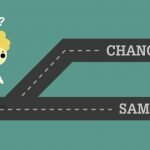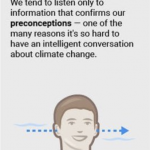How do you choose which behavior change techniques to use in an intervention? The list of 93 behavior change techniques (categorized into 16 groups) can be overwhelming, and they don’t even include a full list of biases and heuristics. So where do you start?
Not all BCTs and biases/heuristics work well together. Take, for example, antecedents, which are typically changes to the social or physical environment to help someone make changes. Antecedents are sometimes short-handed as a way to “prevent failure”. On the other hand, loss aversion bias says that telling people that they might lose something increases their motivation.
There are nuances, of course. Perhaps loss aversion works with people who are not as likely to succumb to depression as a result of failure, or loss aversion may work for smaller-scale opportunities, while antecedents provide an overall supportive structure. But it’s madness to think that any one behavioral intervention could involve 93 BCTs and more.
Here are a few things to consider when choosing behavior change techniques.
What are your best practices?
Much like in UX as a whole, there are general best practices to follow for behavior change. You can learn about many of these by studying heuristics and biases.
Are you creating an experiment?
If you are testing something in particular, the right BCTs to include will be related to your hypothesis. For example, if your hypothesis is “people donate more money to charity if the charity is one they’ve heard of” then you want to test the availability heuristic. You might want to look for BCTs that impact environment, but adding in rewards will only distract from your experiment.
What is your goal?
If your goal is to educate, then focus on BCTs that align with learning. But if your goal is to achieve quick changes, then education may not help much. For example, putting candy bars into a box and storing that underneath healthier snacks doesn’t require deep understanding of the benefits of healthier snacks.
What does your behavioral scientist say?
There’s a reason so many organizations are hiring behavioral scientists, behavior change designers, and behavioral economists. A behavioral scientist will conduct a literature review and tell you what has already been tested. They can recommend the best BCTs for your situation.
In theory all of the BCTs are fantastic. But in practice, you need to pick and choose. What’s best for your situation? Much like good UX in general, less can be more in good design for behavior change.


